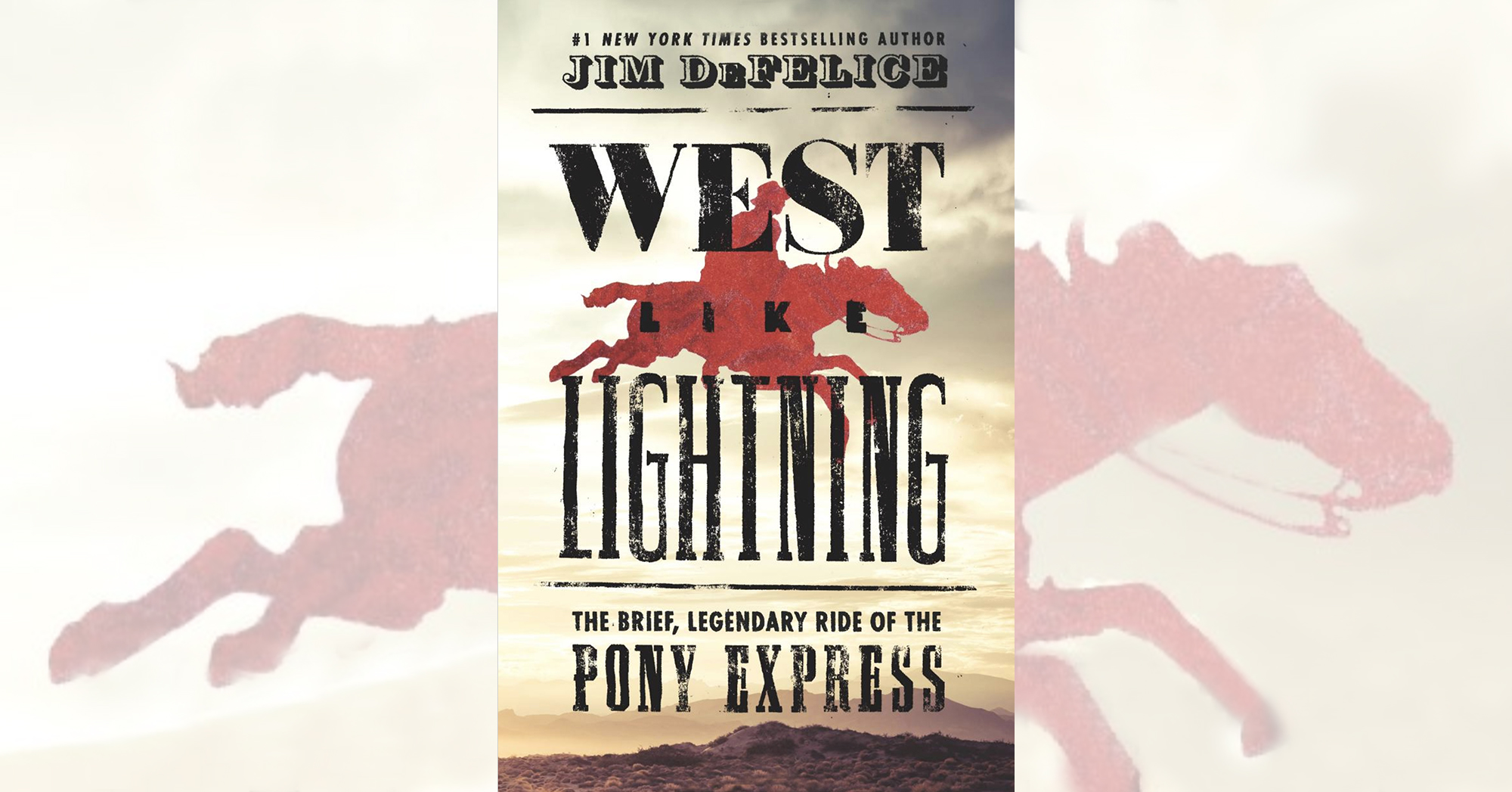West Like Lightning: The Brief, Legendary Ride of the Pony Express, by Jim DeFelice, William Morrow, an imprint of HarperCollins Publishers, New York, 2018, $27.99
The Pony Express flashed like, yes, lightning across the stormy Western landscape for only 18 months, from its St. Joseph, Mo., launch on April 3, 1860, to its close in October 1861. Jim DeFelice, the author of several bestsellers unrelated to the history of the West, neatly sums up the legendary express service between St. Joseph, Mo., and Sacramento, Calif.: “The Pony as a business did an ignoble death in 1861, its parent company crushed under the weight of economic reality. But that was the body only; its spirit and soul lived on—and lives on today, embedded in America’s culture and DNA.” He provides a smooth, enjoyable and fairly fast read, courtesy of clear, crisp writing, well-positioned subtitles (from “Getting Off” to “Doom”) and the narrative structure, which follows the November 1860 record-setting relay ride to announce Abraham Lincoln’s election as U.S. president, while adeptly shifting gears to inform readers about the other intriguing people and events comprising the Pony tale.
The plan by William Russell, Alexander Majors and William Waddell was greater than simply (though it was hardly simple to pull off) to run a horseback mail delivery service. They knew from the start the Pony Express would be a short-lived enterprise, what with the rigging of telegraph wires nationwide and the first transcontinental railroad on the horizon. They wanted to land government contracts to finance the construction of a Western transportation network that could, as DeFelice explains, crowd out competitors and help create “an empire that had a veritable monopoly over delivery in an area they expected to boom in population.” Yes, the trains were coming, but that, the author adds, “was not only in the future but another opportunity: someone had to pick up goods from the stations and distribute them.”
Despite DeFelice’s best efforts to explain the express business, some readers will undoubtedly have trouble grasping the associated financial maneuverings and shenanigans (Russell was indicted at one point for larceny and receiving stolen property before a judge dismissed the charges). As to the “fun” part—the dramatic long, rapid rides, the extreme challenges posed by terrain, weather and raiding Indians, and the involvement of iconic Western figures Buffalo Bill Cody and Wild Bill Hickok—the author reaches the same conclusion as others who’ve tried to document the Pony’s history: Separating truth from myth is often impossible. Almost all of the express company records have been lost, and the stories told many years later by former riders are full of errors and information difficult to prove. For example, the author points to “Pony Bob” Haslam, who later joined Cody’s Wild West. Haslam often spoke of his hair-raising rides during the Pyramid Lake Indian War, which did in fact interrupt the Pony Express service for a while. Trouble is, Haslam’s time line is wrong, and as DeFelice points out, there is no proof “Pony Bob even worked for the service, let alone in that area and at that time.”
At book’s end the author provides his own helpful time line of major events in American and Pony Express history. You’ll also find a list of everyone confirmed as a rider by at least one reliable compiler (Cody is in the unlikely category) and a roster of the Pony stations, east to west, including those listed on the National Park Service map of the Pony Express National Historic Trail. In the 1950s–70s Raymond and Mary Lund Settle wrote excellent books about the Pony Express, and in 2002 Joseph J. DiCerto wrote well about the subject in The Saga of the Pony Express. But familiarity with their works shouldn’t keep anyone from reading West Like Lightning. Once, without cell service or GPS, author DeFelice got lost while driving in the desert over the path the express took, but he admits it didn’t exactly make him feel like one of the daring young riders. “What I felt,” he says, “was barely worse than coming out of the mall and not knowing where your car is.”
—Editor





